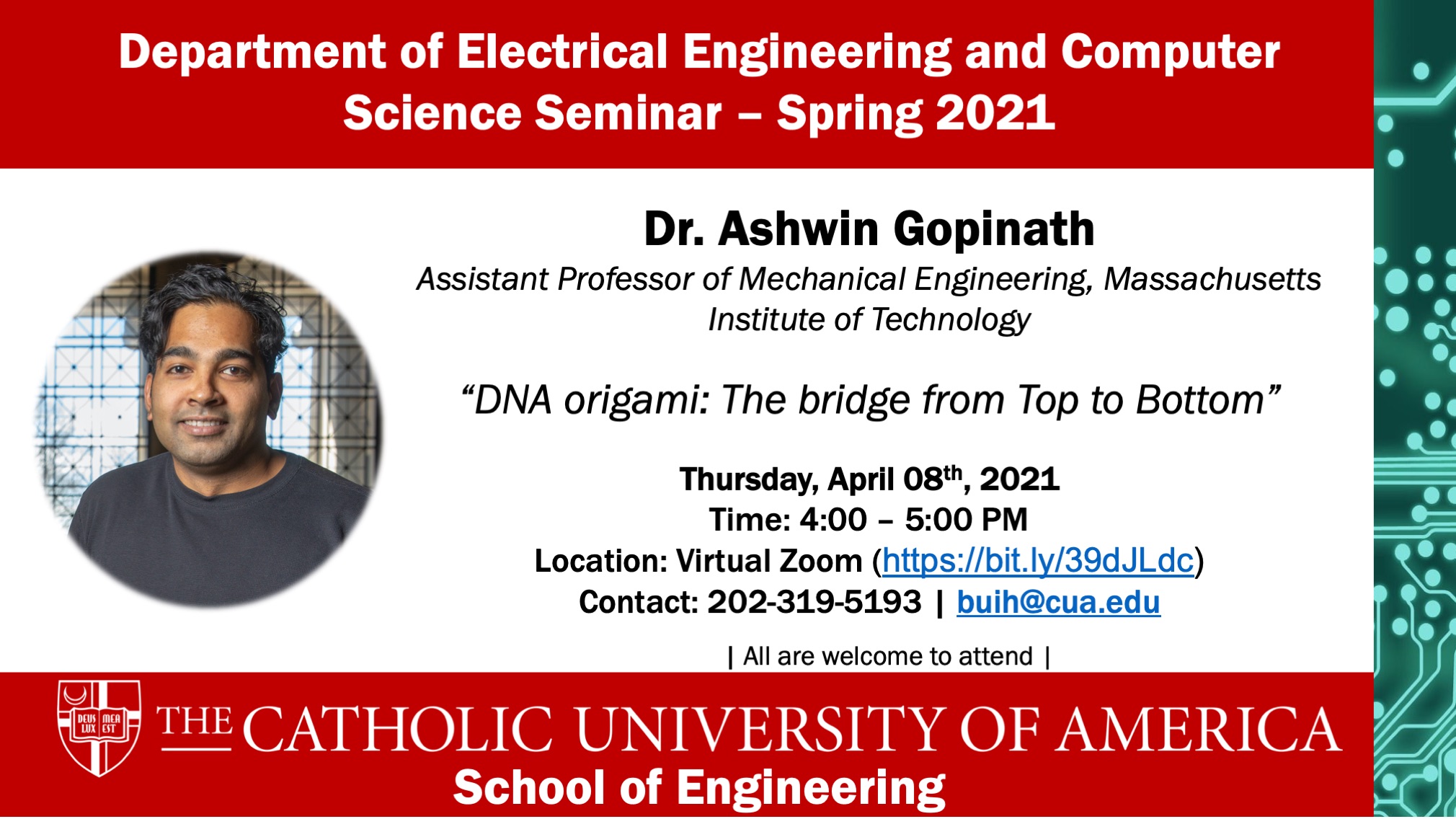Dr. Ashwin Gopinath, MIT

Abstract: Conventional top-down nanofabrication, over the last six decades, has enabled almost all the complex electronic, optical and micro-fluidic devices that form the foundation of our society. Parallel efforts, exploring bottom-up self-assembly processes, have also enabled design and synthesis of structures like quantum dots, carbon nanotubes and unique bio-molecules that possess technologically relevant proper- ties unachievable top-down. While both these approaches have independently matured, ongoing efforts to create “hybrid nanostructures” combining both strategies, has been fraught with technical challenges. The main roadblock is the absence of a scalable method to deterministically organize components built bottom-up within top-down nanofabricated structures. In this talk, I will first introduce a directed self-assembly technique that utilizes DNA origami [1] as a molecular adaptor to modularly position, and orient, bottom-up nano-components (like quantum dots, light emitters and proteins) within top-down nanofabricated devices.[2] I will then present experimental results demonstrating the utility of the technique to achieved absolute, arbitrarily scalable, control over the integration of discrete emitters inside optical devices.[3,4] Finally, I conclude by presenting my vision of how a DNA origami based bridge between top-down and bottom-up nanofabrication can enable a range of highly transformative, and functional, devices. Specifically, I will present data demonstrating arrays of single-photon sources, method for extremely economical nanotexturing as well as a modular molecular interface between biology and solid-state.
References
1. Rothemund, P. W. K. Nature 2006, 440, 297–302.
2. Gopinath, A. et al. ACS Nano 2014, 8, 12030–12040.
3. Gopinath, A. et al. Nature 2016, 535, 401–405.
4. Gopinath, A. et al. Science (Accepted)
